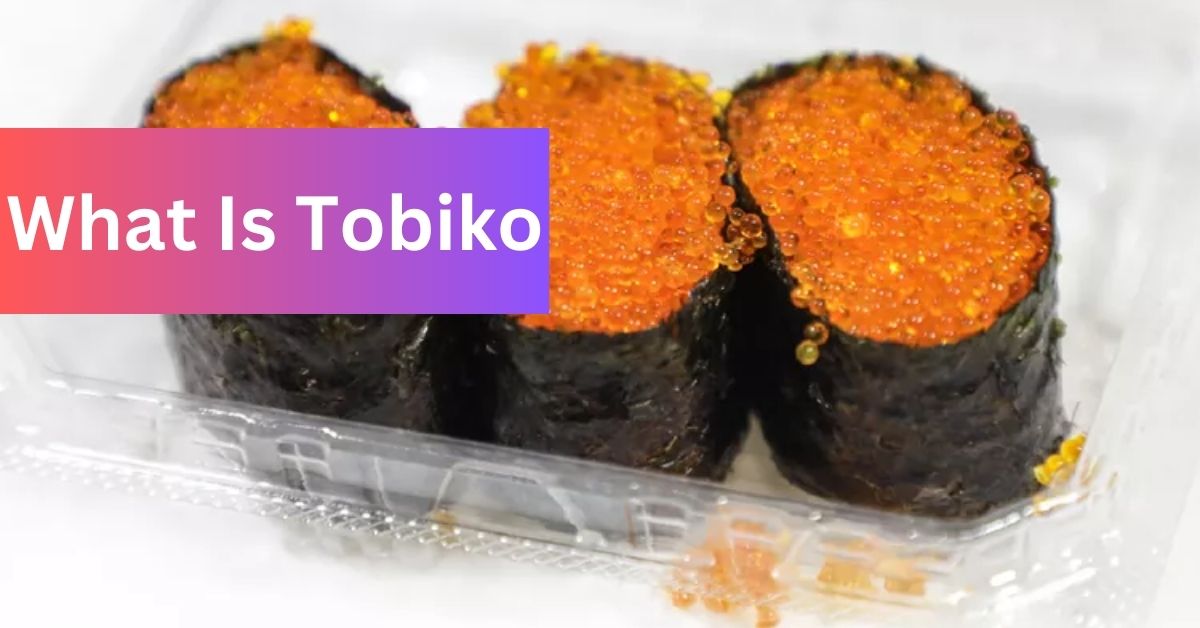What Is Tobiko – A Guide To The Delightful Fish Roe!
Discovering tobiko was like finding a hidden gem in the world of sushi – its tiny, colorful pearls bursting with flavor brought a whole new dimension to my dining experience.
Tobiko is a type of fish roe derived from the eggs of flying fish. It is commonly used in Japanese cuisine and known for its small size, vibrant colors, and salty yet subtly sweet flavor profile.
Let’s delve into the world of tobiko, its origins, flavors, culinary uses, and more.
Exploring the Delicacy of Tobiko – A Complete Guide!
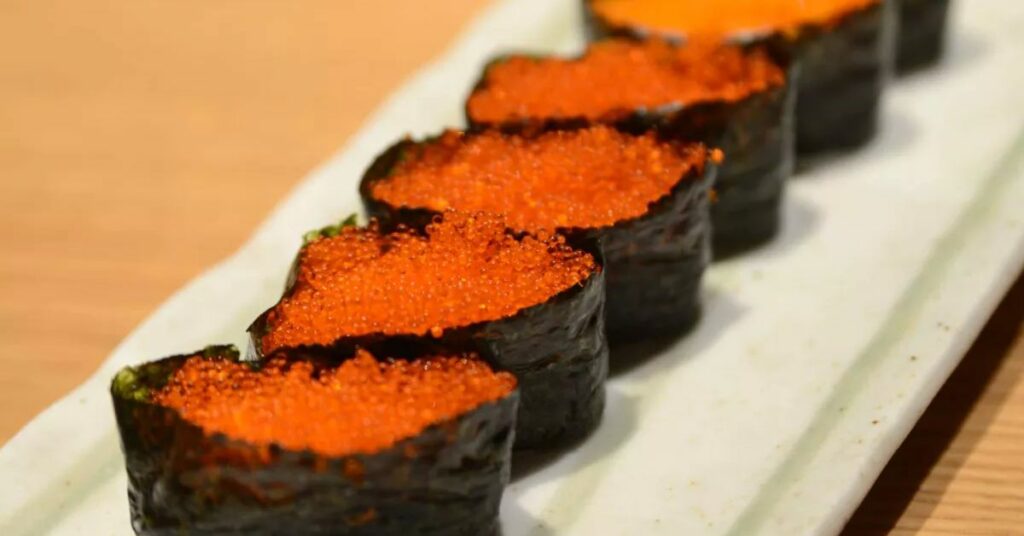
Tobiko, hailed as a delicacy in Japanese cuisine, is unique among other types of fish roe due to its distinct characteristics and versatility. Originating from the roe of flying fish, tobiko is celebrated for its vibrant colors, ranging from golden orange to reddish-orange.
And its salty yet subtly sweet flavor profile. Unlike caviar, which tends to be larger and darker, tobiko’s smaller size and brighter hues make it a visually appealing addition to various dishes.
Culinary enthusiasts often appreciate tobiko for its satisfying crunch and ability to enhance the texture and taste of sushi rolls,
sashimi, and other seafood dishes. Beyond its traditional uses, tobiko’s versatility extends to innovative applications in sauces, dips, salads, and even hors d’oeuvres, offering endless possibilities for culinary experimentation and creativity.
Understanding Tobiko – Origins and Characteristics!
1. Origins:
Tobiko, sourced from flying fish roe, offers a burst of salty flavor and vibrant color to dishes. Harvested in temperate and tropical oceans, these tiny, salt-cured eggs are prized for their delicate taste and crunchy texture, enriching sushi and seafood creations with a touch of umami goodness.
2. Characteristics:
In addition to its distinct appearance and flavor profile, tobiko is also prized for its versatility in culinary applications. Commonly used as a topping or garnish in sushi and sashimi dishes, tobiko adds both visual appeal and textural contrast to rolls and nigiri.
Beyond Japanese cuisine, tobiko is increasingly finding its way into fusion dishes, such as sushi burritos, poke bowls, and sushi burgers, where its vibrant colors and unique flavor contribute to a delightful eating experience.
Moreover, tobiko is valued for its nutritional content, being a rich source of protein, omega-3 fatty acids, and essential vitamins and minerals, making it not only delicious but also a healthful choice for seafood enthusiasts.
Tobiko vs. Caviar – Understanding the Differences!
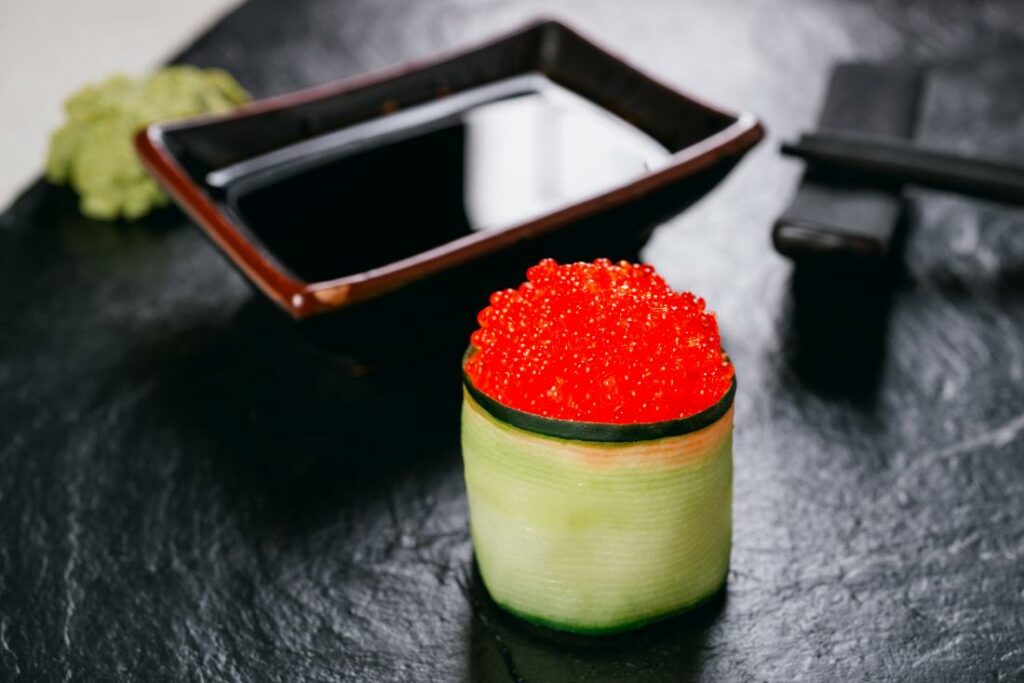
1. Species and Size:
In addition to their differences in origin and appearance, caviar and tobiko also contrast in availability and cost. Caviar, associated with luxury, is rarer and pricier due to sturgeon scarcity. Tobiko, sourced from flying fish, is more affordable and widely accessible.
Moreover, tobiko offers diverse flavor options, often infused with ingredients like wasabi or yuzu, allowing for creative culinary experimentation. Overall, while caviar exudes exclusivity, tobiko’s affordability and versatility make it a popular choice for enhancing dishes without breaking the bank.
2. Cost and Availability:
Moreover, the sustainability of tobiko production is another factor contributing to its popularity as an alternative to caviar. Sturgeon populations have been severely depleted due to overfishing and habitat destruction, leading to strict regulations on caviar harvesting and driving up its price.
In contrast, tobiko is primarily sourced from sustainable fisheries that focus on responsible aquaculture practices, ensuring the continued availability of this delicacy without endangering marine ecosystems.
This eco-friendly aspect further enhances tobiko’s appeal to environmentally conscious consumers seeking ethically sourced seafood options.
Exploring the Various Types of Tobiko – Try Now!
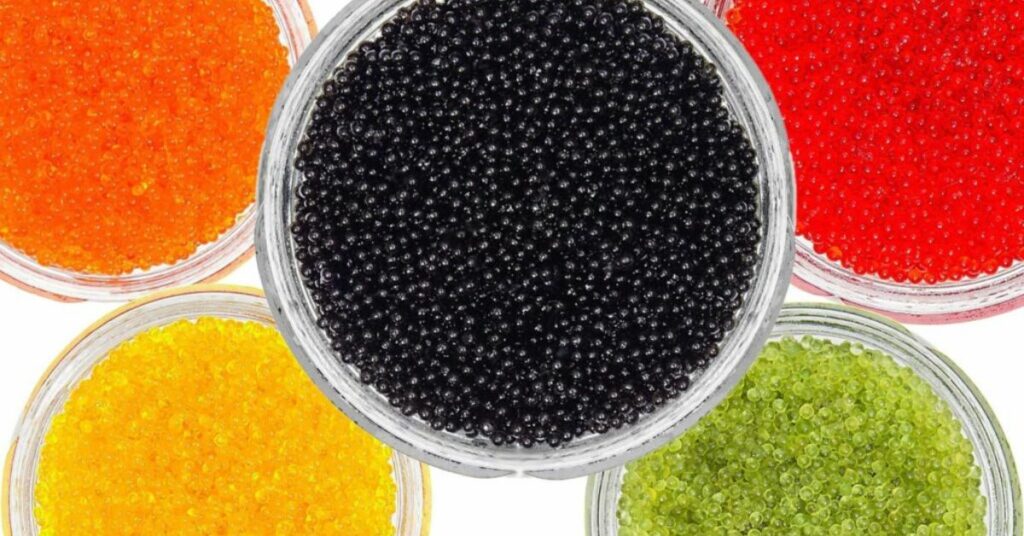
- Golden Tobiko: This variety of tobiko is naturally cured only with salt, resulting in a fresh and salty flavor profile with a hint of orange hue.
- Red Tobiko: Dyed with ingredients like beets or chilis, red tobiko offers a mild, earthy sweetness or a spicy kick, depending on the added flavors.
- Green Tobiko: Infused with wasabi and other seasonings, green tobiko provides a sharp and spicy bite, complemented by its vibrant color.
- Yellow Tobiko: Influenced by citrus fruits like yuzu, yellow tobiko offers a refreshing flavor and a bright, sunny appearance.
- Black Tobiko: Characterized by its nutty umami flavor, black tobiko gets its striking color from squid ink, resulting in a visually stunning dish addition.
Culinary Uses of Tobiko – From Sushi to Salads!
- Topping for Sushi and Sashimi: Tobiko’s salty pop and small size make it a perfect topping for sushi rolls and sashimi, adding both flavor and visual appeal to these dishes.
- Ingredient in Sauces and Dips: Tobiko can be incorporated into sauces and dips, such as spicy mayo, thanks to its ability to hold its shape and enhance the overall flavor profile.
- Garnish for Fish Dishes: It also serves as a delightful garnish for various fish dishes, bringing texture and color to the plate while imparting its unique flavor.
- Innovative Uses: Beyond traditional applications, tobiko can be used creatively in dishes like omelets, rice bowls, salads, and even hors d’oeuvres, offering versatility in culinary experimentation.
Where to Find Tobiko – Availability and Shopping Tips!
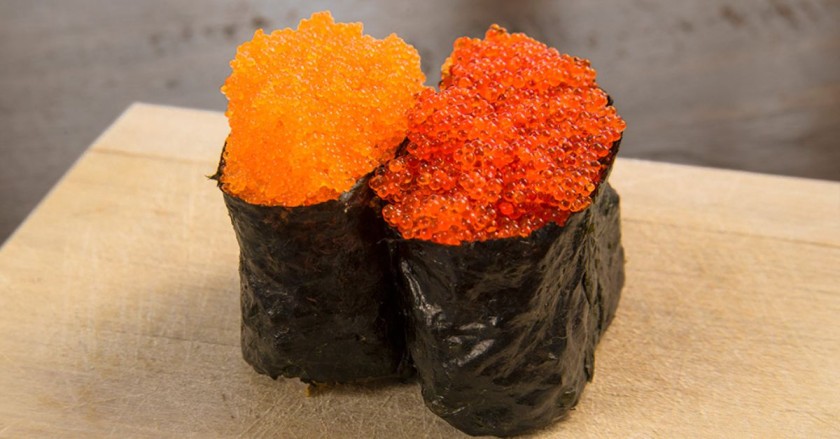
1. Availability:
Tobiko’s popularity has expanded its availability beyond specialty markets, with options ranging from traditional loose roe to ready-to-eat sushi rolls and flavored spreads. Upscale restaurants and gourmet suppliers offer tobiko-infused products like sauces and crackers,
while online retailers cater to global demand for sushi-grade ingredients. Whether for special occasions or everyday culinary adventures, tobiko adds flair and flavor to a variety of dishes, making it a sought-after delicacy for seafood enthusiasts worldwide.
2. Shopping Tips:
When purchasing tobiko, it’s essential to consider its sourcing and sustainability. Look for options that are sourced from reputable suppliers who adhere to responsible fishing practices and environmental standards.
Additionally, check for certifications such as MSC (Marine Stewardship Council) or ASC (Aquaculture Stewardship Council) to ensure the tobiko you’re buying is sustainably sourced.
Furthermore, consider the various types of tobiko available, including flying fish roe and smelt roe, each offering unique textures and flavors. Experimenting with different types can add depth and complexity to your dishes, allowing you to tailor your creations to suit your preferences and culinary style.
Frequently Asked Questions:
1. Is tobiko nutritious?
Yes, tobiko is nutritious and offers several health benefits. It is a good source of protein, selenium, and omega-3 fatty acids. However, it is also high in cholesterol, so consumption should be moderated as part of a balanced diet.
2. What are the different types of tobiko available?
Tobiko comes in various colors and flavors, including golden, red, green, yellow, and black. Each type of tobiko is infused with different ingredients or dyed to achieve its unique color and flavor profile.
3. How is tobiko used in culinary dishes?
Tobiko is commonly used as a topping for sushi and sashimi, adding both flavor and visual appeal to these dishes. It can also be incorporated into sauces, dips, and garnishes for fish dishes, salads, and more. Additionally, tobiko can be used creatively in various other culinary applications.
4. Where can I find tobiko for purchase?
Tobiko can typically be found in Japanese or Asian markets, as well as specialty grocery stores like Whole Foods. It’s advisable to look for fresh, high-quality options that are properly sealed and stored when purchasing tobiko.
5. What flavors can I expect from tobiko?
Tobiko has a salty yet subtly sweet flavor profile, with hints of citrus and a satisfying crunch. The flavor may vary depending on the type of tobiko and any additional ingredients used in its preparation.
6. Can tobiko be used in non-traditional dishes?
Yes, tobiko can be used creatively in various non-traditional dishes, including omelets, rice bowls, salads, and hors d’oeuvres. Its versatility allows for experimentation and innovation in culinary applications.
Conclusion:
Tobiko, with its vibrant colors, delightful crunch, and nuanced flavors, adds a touch of elegance to any dish. Whether used as a topping for sushi, a garnish for salads, or an ingredient in sauces, It’s versatility and distinct characteristics make it a beloved ingredient in Japanese cuisine and beyond.
Read more:
